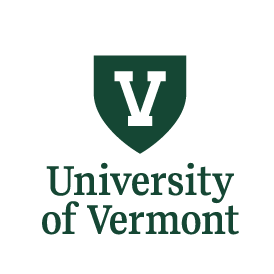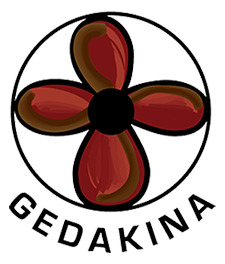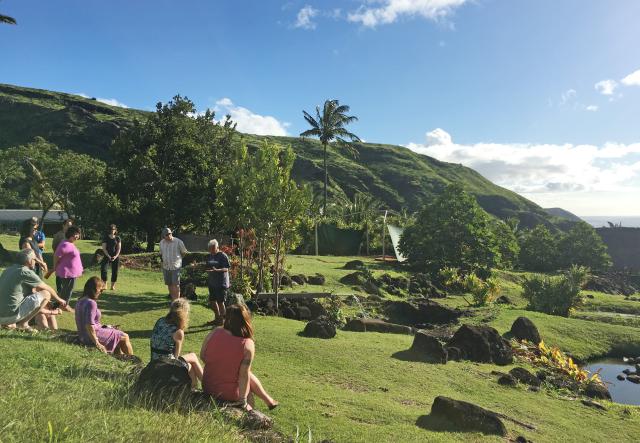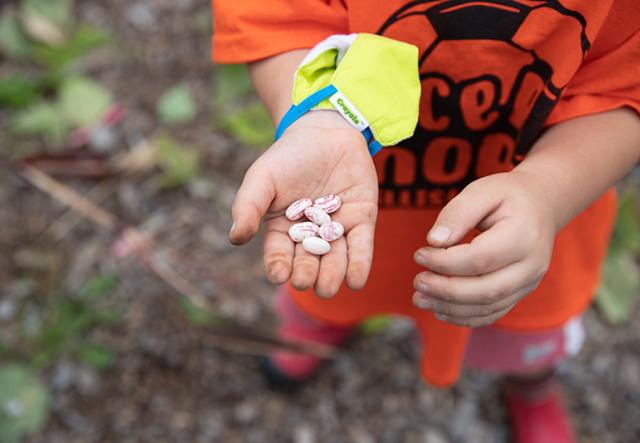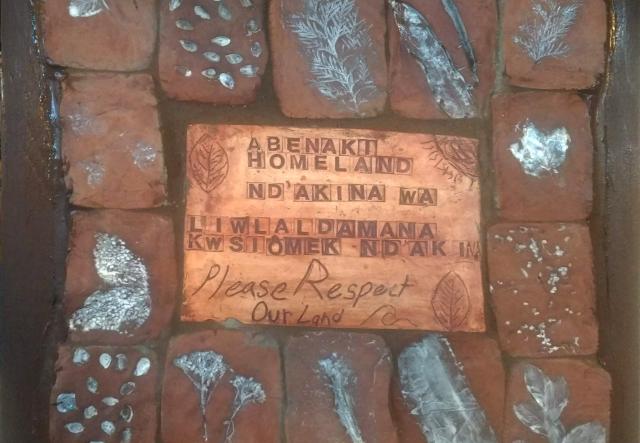Hawai'i and Vermont, Place-Based Partners

With nearly 5,000 miles between them, Hawai'i and Vermont are two places that may not seem to have a lot in common. But in fact, for a group of educators looking to amplify Indigenous education in the state of Vermont, the Island of Hawai'i is the perfect place to visit and learn from.
A partnership between a team of Hawaiian and Vermont educators has developed over the last several years, with virtual and in-person shared learning. Strong relationships are a key reason this collaboration is successful. And, shares Shelburne Farms educator Aimee Arandia Østensen, collaborating with Hawaiian partners is inspiring for other reasons, too. "In Hawai’i, there's a sense of seeing what's possible, because widespread Indigenous cultural revitalization efforts have been underway since the 1970s, whereas in Vermont, a lot of people might say Indigenous education efforts rose to public awareness in 2010."
There are reasons for this gap in time: Hawai'i was annexed in 1898; compare that to the date of Samuel de Champlain’s arrival in Vermont, 1609, which was followed by centuries of colonization and a state-sponsored eugenics campaign that targeted those deemed to be "defective, deficient, or dependent," including a significant number of Indigenous and French-Indian Vermonters. In short, colonizers have had more time to implement similar strategies of ethnocide and genocide. "In Hawai'i, instruction of and in the Hawaiian language began a generation ago starting with preschoolers and developing as those youngest learners grew up. Hawaiian immersion schools began opening, and now the state is in its second generation of formal Hawaiian language programs within schools. Both Native Hawaiian cultural practices and language are centered in these immersion schools, embracing an approach that is sometimes referred to as place-based, ‘āina-based, or culture-based education. In Vermont, we’re just in the early stages of talking about who should learn Abenaki and starting an Abenaki language program," says Aimee.
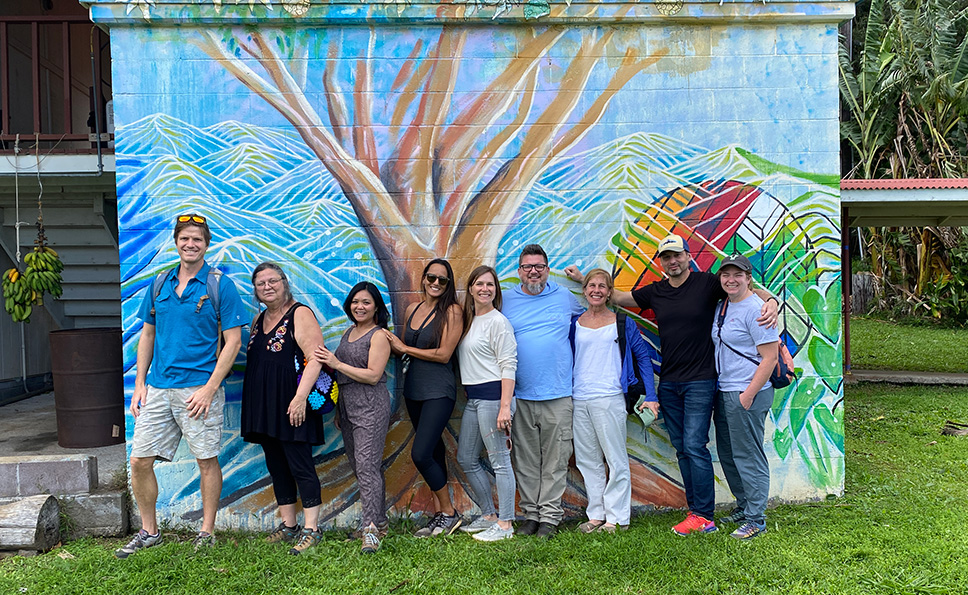
This winter, a research team of Vermont educators–from Shelburne Farms, University of Vermont, Burlington School District, and Native American cultural organization Gedakina–visited the island, conducting a series of site visits to schools and community organizations to learn about Hawaiian place-based and culture-based education practices. The hope is these findings can inform the ways in which we amplify Indigenous education in Vermont and "decolonize" (i.e. de-center colonizer worldviews) place-based education with integrity. "I went into this asking, how do we tune our work to support Indigenous perspectives? There's so much to learn, that we need to learn, in order to thrive and heal our relationship to the Land and to community," says Joan Haley, a Shelburne Farms educator and director of the Park for Every Classroom program.
These Vermont researchers are now synthesizing findings from the trip and are moving toward eventual publication. But the impacts of this field work are already being felt across many spheres.
Read on for their reflections, through their own words and photos.
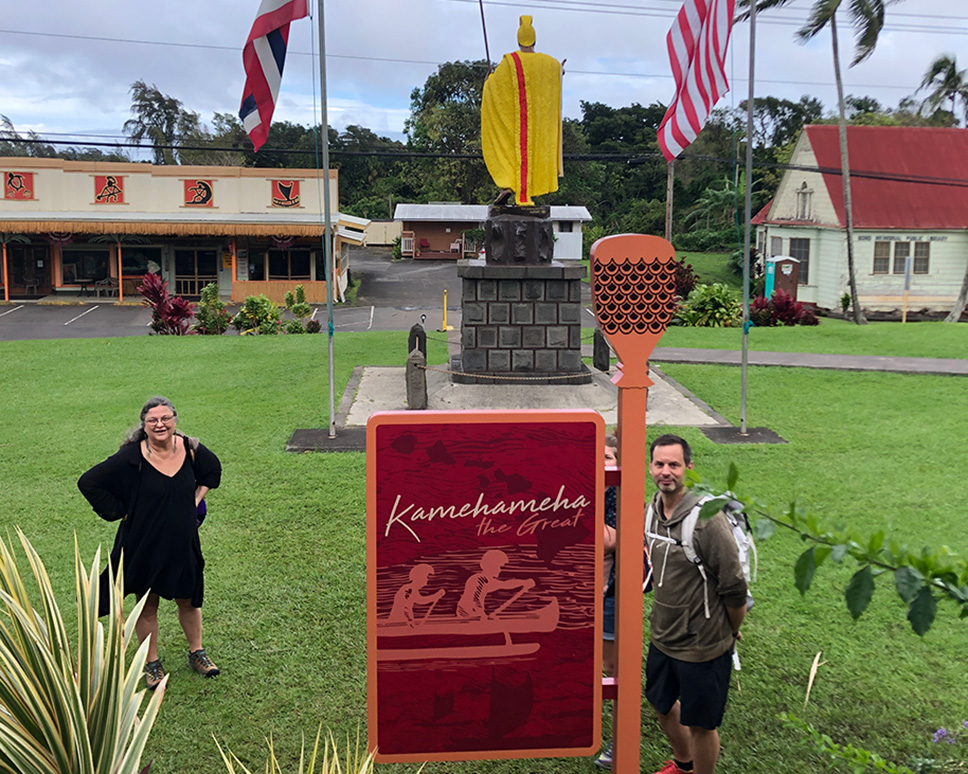
Judy Dow (left, in black), teacher and activist, Gedakina: "The differences are obvious between Vermont and Hawai'i, but the similarities are amazing. A lot of my learning actually happened once I came home, seeing the connections between how climate change is impacting our two places. What I'm thinking about today is related to equity and air quality issues in both states, and how I can keep advancing equity in my work on the Vermont climate change plan."
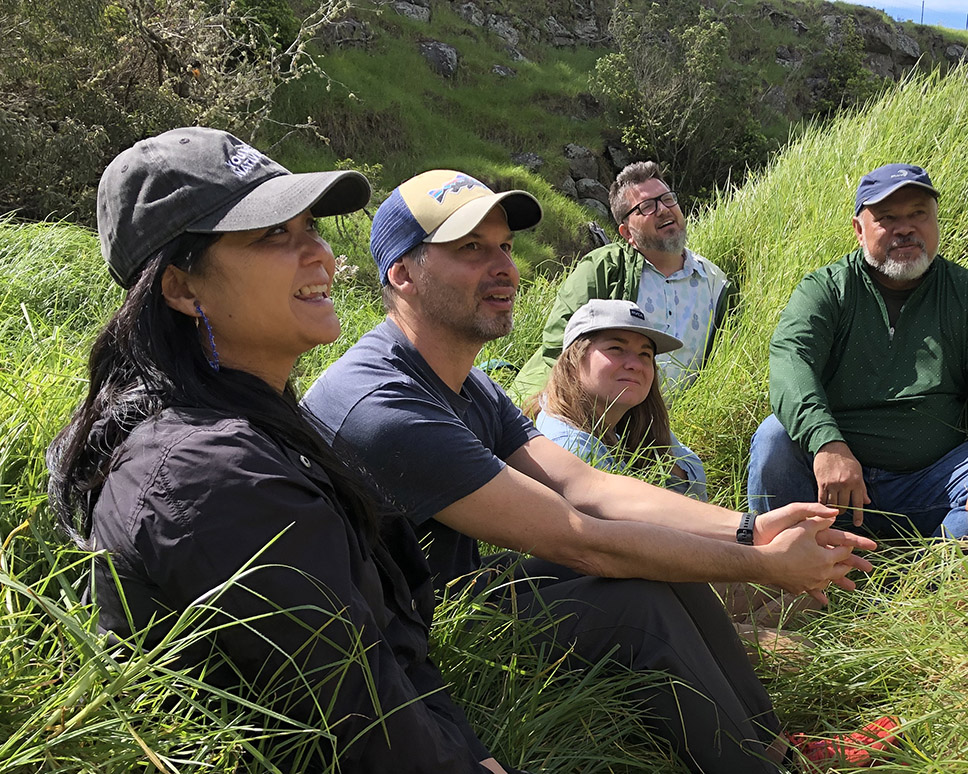
Aimee Arandia Østensen (far left), educator, Shelburne Farms: "A memorable moment was sitting at the Kohala Center, listening to place-based educator Kahele Nahale-a and Cheryl Kauhane Lupenui, president and CEO of Kohala, share traditional stories about the surrounding watershed and Land. The stories were handed down over generations of previous stewards and translated into English. Today, Kohala is working to restore this tract of land with a place-based education lens. As a research group, we've been considering the idea of forming a community of practice. On the trip, I understood that the community of practice exists within the Land already; we humans have to learn how we can be invited. In the Hawaiian form of education that we experienced, culture and land are not separated from education. I want to see where we can go with this, in our programs and in updating our resources for educators. And, we’re hoping our partner Paki and others can come to Vermont next.”
Alapaki Nahale-a, Kamehameha Schools' senior director of community engagement and resources for Hawai'i Island (far right): "I had the pleasure of visiting Vermont with colleagues from Hawaii in 2018 to explore the potential synergies between our work. The folks from Hawaii saw Vermont's commitment to honoring place, the natural environment, and how education was key to the multi-generational lift ahead of us. We saw a lot of potential alignment and opportunities to elevate some foundational concepts to a larger audience, but COVID arrived and created barriers to advancing that. Despite the challenges, the depth of the relationships formed during that initial visit survived a global pandemic, peoples' change in positions, and even people changing institutions.
"Not only did we stay in touch, our 'community' grew, with both sides adding people and organizations to the conversation to enrich the possibilities. The sharing back and forth has not only been rich, it has been nourishing, and I feel like we all get the sense that we are on the precipice of something truly transformational. Ultimately, I think we stand interlocked on the belief that the survival and wellbeing of our species is dependent upon restoring our relationship with our ecosystems. I know that my Vermont 'ohana (family) shares this notion of a sacred union with place and that solidarity will only grow stronger."
Jeremy DeMink (second from left), middle school humanities teacher, Edmunds Middle School: "The entire focus of my humanities class is social justice education. I've been trying to find the links between place-based education, climate change education, social justice education, and Indigenous education. There was a moment at the Kohala Center listening to Hawaiian stories told by Kahele and Cheryl that I realized Indigenous stories center on place, not people. That was the first time I noticed the difference between Indigenous stories and Western stories. Moving forward, I really want to change the focus of my curriculum to make sure that my students center the Land when working on climate action projects. Land was the missing piece."
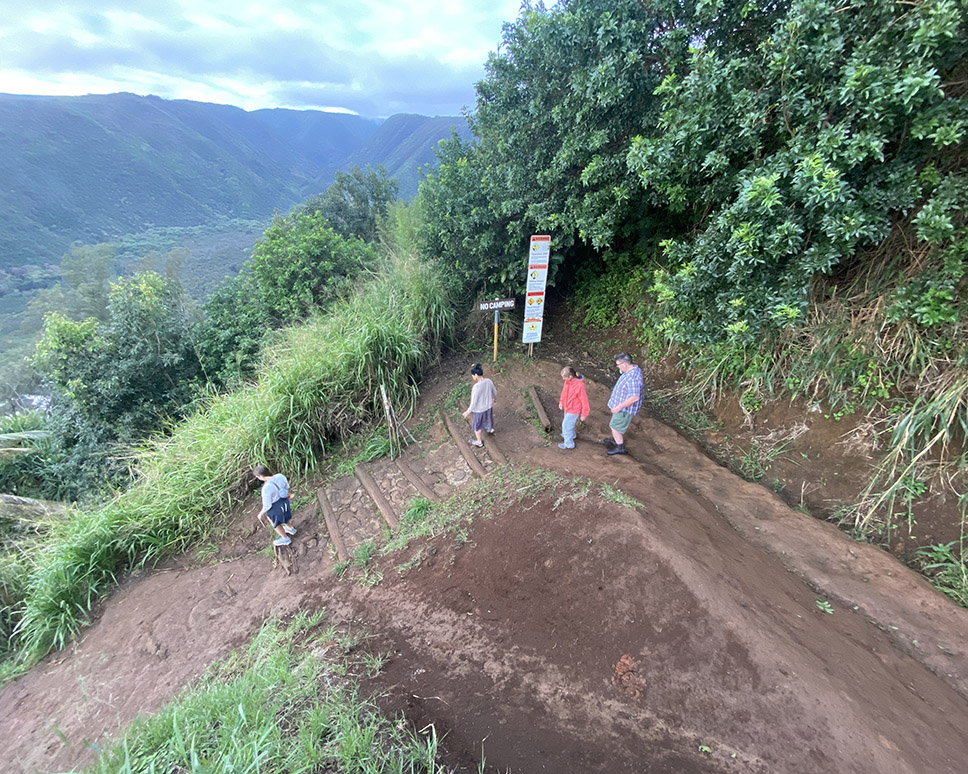
Joan Haley (in red, center), educator, Shelburne Farms: "In my work with the National Park Service, we talk about co-stewardship as being between parks and Indigenous groups. But what I realized is that it's also about co-stewardship with the Land too. Really, the Land is stewarding us, and has been for all of humanity. The connection with nature was so powerful in Hawai'i, and I keep coming back to the Land, the idea of the Land as teacher, what our partners called 'āina-based, or land-based, education. The trip has already impacted my work with the Park for Every Classroom program, and it's going to permeate everything we do." You can read more about Joan’s reflections on the trip and the concept of co-stewardship on the Park for Every Classroom blog.
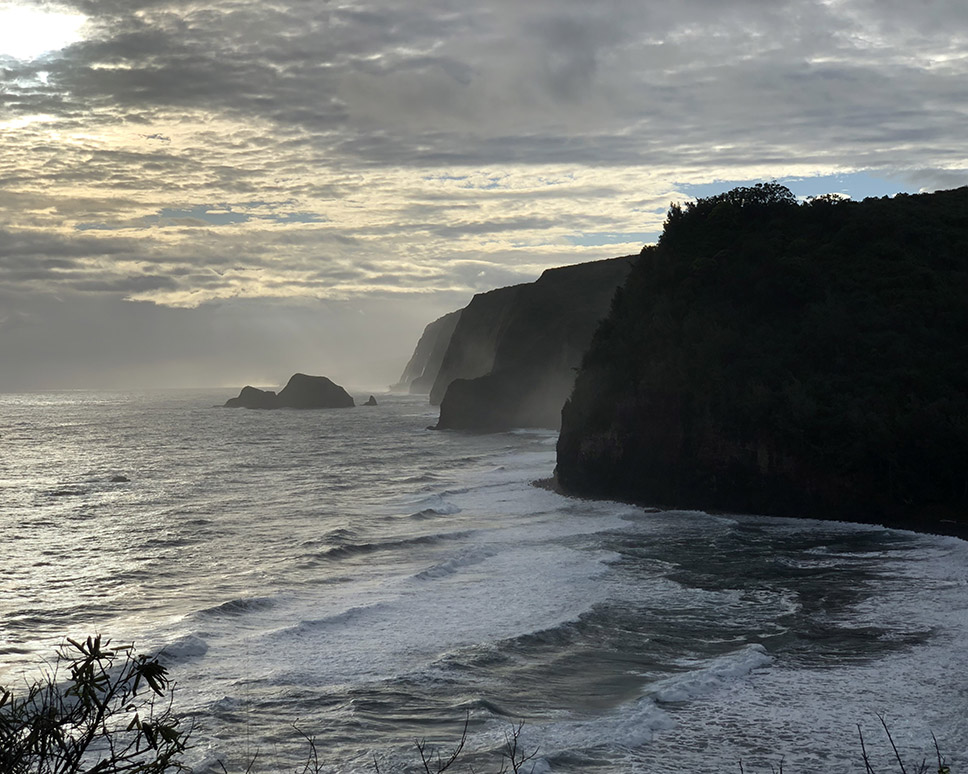
Tricia Brown, senior lecturer, College of Education and Social Services, University of Vermont: "My background is in science teaching, so I came to this trip with questions like, 'What does it look like to braid and integrate Indigenous knowledge in Western classrooms?' There was a moment where we observed the fog on the island. Our partners shared the Indigenous practice of using these mists to predict weather, of doing careful, deep listening to nature, of noticing patterns and subtle clues. Someone trained in Western science like me is trained to observe in a very particular way. I could document and track what's happening with that mist, I could make you a nice chart, but what are the Indigenous tools I don’t understand as well, about observing and being with the mist? What is the unlearning that needs to happen? And, can we come to the same conclusion with different tools?"
Simon Jorgenson, associate professor, College of Education and Social Services, University of Vermont: "I’m thinking about incorporating cultural practices into our requirements for the Place-Based Certificate program. What would it mean for students to create their own cultural practices related to land and community? There’s the work of rediscovering cultural practices, but there’s also the work of creating something new.”
Jessica DeMink-Carthew, associate professor, College of Education and Social Services, University of Vermont: "This learning journey was inspired in part by a question that is often raised in conversations about Indigenous education: How can you engage respectfully in Indigenous education as someone who holds a settler-colonizer identity? Our journey deepened my appreciation for both the importance and complexity of engaging in Indigenous education, especially as it relates to positionality. I also better understand the ways in which this work calls on educators to be in 'right relationship' with the land, decenter ourselves, and reject silos, perfectionism, and fear (all of which are rooted in colonization, white supremacy, and capitalism). I am so grateful for the wisdom and navigational tools that were shared with us during our journey and am reflecting on what this means for my personal journey and my work with preservice and in-service educators. I will never forget Sasa's response to our question about positionality: 'Be present.'"
A special thank-you to our Hawaiian collaborators including: Alapaki Nahale-a, Kāhele Nahale-a, Cheryl Ka‘uhane Lupenui, No’eau Peralto, Haley Kailiehu, Kodie Solis-Kalani, Sasa Anthony, Michelle Nahale-a, Jody Anastasio (NPS, Hawaii Volcano National Park), Scott Laursen (Pacific Island Climate Adaptation Science Center) and Barbara Sarbin (Volcano School of the Arts & Science). More to come on projects emerging from this work.

